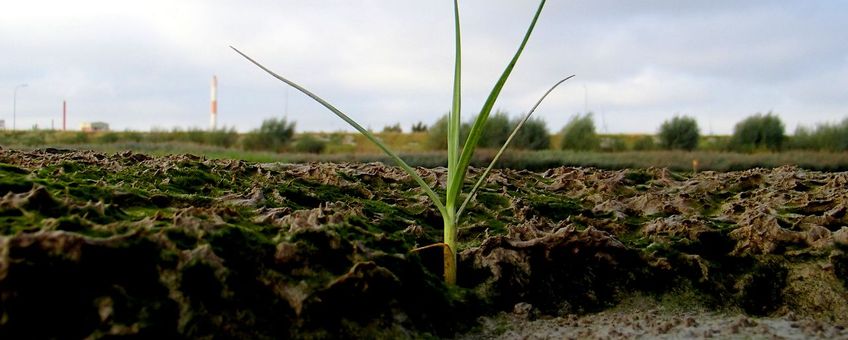
Organisms in search for a place to live use window of opportunity
NIOZ Royal Netherlands Institute for Sea ResearchA seed seeking to nest in dry soil or a salt marsh plant exposed to strong forces of waves, all face harsh conditions under which they must try to settle. “All those organisms have to take advantage of what is called a window of opportunity”, Van Belzen says. “They have to have a favorable period that is long enough for their roots to grow in the dry or dynamic soil. Once their roots reach deep enough, they can again cope with tougher conditions. So it's not so much the average drought or the average strength of the waves that plays tricks on them, it's the distribution around those averages. Is there a period of suitable conditions that lasts long enough for them to take a chance?”

Mathematics
Van Belzen and colleagues have encapsulated this law into a mathematical formula that looks both simple and elegant: l=d/t. “But as simple as it looks, that's how long we've been philosophizing about it”, the researcher states. “This insight that you have to look for the window of opportunity, i.e. the chances for an organism, are relatively new in this field of research. Until now, we thought mainly in terms of ‘alternative states’, barren or vegetated, wet or dry. And those states could then turn towards each other via critical transitions, or tipping points. But how that works was not clear. By explicitly adding the variation in conditions to the theory, we can calculate the probability of such a critical tipping point occurring.”

Determining needs
The formula of Van Belzen and colleagues is more than fodder for philosophers and mathematicians. It can also be used by fieldworkers, he emphasizes. The key lies in determining the timing of an organism's needs in relation to the climate. “For example, you must try to determine how long it takes for a plant to have roots long enough to reach groundwater, or how long it takes for a plant to get high enough to withstand grazing by animals. At the same time, you need to measure how long a period of drought can last or how often grazers pass by, including the spread therein. Within that spread, you can then take targeted measures as a terrain manager, to increase the chances for an organism, for example by giving extra water or by keeping grazers away.”
Expressed in the mathematical formula l=d/t, l is then the speed at which the roots grow in centimetres perday, d the groundwater depth during dry conditions in centimetres and t the time in days that the plant has the chance to grow undisturbed. “By looking through these mathematical glasses, you can get more than an educated guess on the chances of an organism to settle”, Van Belzen says.
More information
Text: NIOZ
Photos: Jim van Belzen
